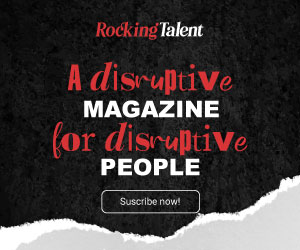As the founder of TalentNet, LLC. Craig Fisher helps companies, leaders, and teams of all kinds with digital brand, inbound marketing strategy and training for recruiting, sales, marketing, and personal brand; and teaches the latest cool tools for prospect and talent sourcing, attraction, and connection.
BY: Admin Ramírez
When companies develop great strategies to reach more customers, they seek to generate an excellent customer experience, but usually they forget about their No. 1 customer, the one who chooses to devote at least one third of their day to the company each day: the employee. If your employees are not your biggest fans, you have a problem. This takes into account all roles, from your junior account executive, your secretary, or managers, who, well informed and motivated, can become the best and most effective ambassadors of your brand and thus help attract the best talents.
Although at first glance it may seem as obvious as it is necessary, in the XXI century one of the biggest painships of many companies is precisely this employee advocacy or building a community of workers that are proud to belong to the organization and willing to pass on the culture and values of the company.
In the current digital environment, the opinions and evaluations that users make of products or services offered by brands on social networks have a great impact on the company’s online reputation. In this context, many companies are promoting strategies that encourage the participation of employees as ambassadors to improve the brand image and increase trust in it on portals such as Glassdoor or the company’s social networks profiles.
In business coaching there is a rule “happy employees generate more sales”, but how can we achieve this, beyond the tried and true strategy involving economic incentives and/or benefits?
“Let’s design experiences”, Craig Fisher tells us. There are many factors that are changing the way we approach Human Resources and with the arrival of COVID-19 it’s gained more importance; from attracting and selecting talent, to developing and retaining people. Regardless of external pressures, the fact is that this change requires a new way of thinking about our people and how we design our people management strategies.
A work methodology that maintains this guideline is Design Thinking, as a tool to understand and improve the experience of candidates and collaborators. Craig highlights the importance of having a strategy of internal ambassadors; this approach has been the protagonist of the Think Tank in companies such as IBM, Sisco or CA Technologies where the focus has been on the creation of Employee Advocacy programs to improve the reputation of companies’ brands. During these meetings, managers and collaborators highlighted how training, emotional connection and transparency are essential to boost the recognition and notoriety of organizations.
Besides the design of journey maps for candidates and collaborators, and the creation of a user persona for the different roles, Craig emphasizes the use of empathy maps based on interviews where a pleasant and trust enabling atmosphere is generated, interviews where the interviewer does not go with a survey or with a list of established questions. Empathic interviews seek to go further and allow for the interviewee to tell experiences, discover feelings and emotions.
Crucial to a human-centered process, empathy allows you to put aside your own assumptions about the world to obtain information about people and their needs.
These interviews allow us to understand:
- How does our ideal candidate look for a job, what do they use to evaluate and compare companies and opportunities?
- What kind of experience our people want and need throughout their time in the organization; how do we identify the key points that allow us to create a better experience, and the goals we must set to fully utilize and maintain our key people?
After the interviews, everything that has been collected is summarized in a scheme that allows to quickly identify what the person says, does, thinks and feels. This serves as a very powerful knowledge base for generating improvements, changes, and teamwork.
Under this philosophy of putting the person at the center, an innovative approach is generated that will change the way in which Human Resources teams offer value, organize work, and find solutions.
Craig shares some comments to take into consideration when creating an Employee Advocacy program:
- Without corporate culture there is no strategy in social networks with your employees. We cannot carry out a strategy for our employees to be our social speakers if we are not clear about our values and if we do not know how to communicate them either.
- Instruct them to invite their contacts to the contests or events the company creates, to build their own community.
- Treat what’s new in the company as if it were an event.
- Rate their posts and congratulate them every time they have a significant number of “likes” or “RTs”
- Give options and do not demand the same level of involvement. Not all employees are going to have the same role in social media. Depending on their interests and skills, it must also be considered that not everyone communicates the same and does not generate the same level of engagement. For example, IBM, one of the companies that has a successful employee advocacy program has different roles: creator, collaborator, conversationalist, ‘listener’, etc.
- Take an interest in what they like and create merchandising with the company logo. For example, if you have collaborators that show their love for their pets, the company could make pet food cups with your organization’s logo.
In a digital context in which evaluations and opinions are decisive for the success of companies, ambassadors have become a critical factor for branding and reputation. -Employee advocacy must be transversal to the entire organization, since issues such as brand image, product knowledge, integration, and relationship with the rest of the departments affect all areas of business. Building strategies based on experiences such as corporate social responsibility, strengthens the bond with the company and enhances the pride of belonging -, concludes Craig.
Craig Fisher | TalentNet Media Founder





